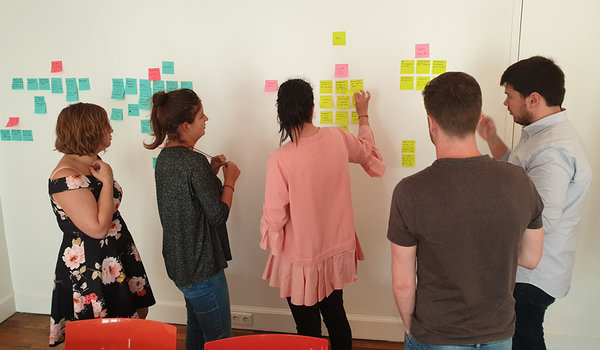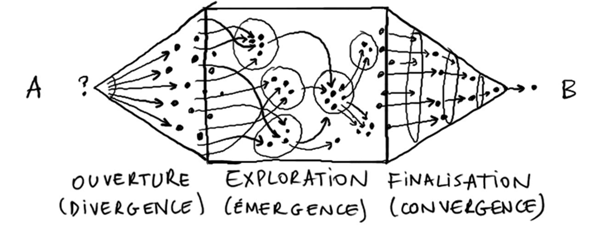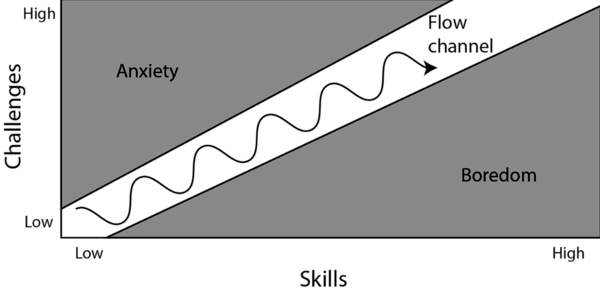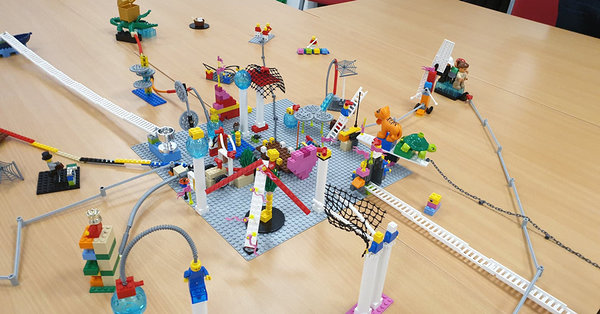July 15, 2019
Lego Serious Play, play to collaborate and innovate together!
Listening to different players in order to develop new services or products together is the concept of co-development or co-design. Today, more and more advertisers believe in the benefits of this design process. Gathering all business players and end users around the same table is one of the secrets of success to reach the 21st century's Holy Grail of "innovation". Yet how can we get different people to communicate with each other? Every stakeholder in a project has their own language and objectives, so co-existence can sometimes be challenging if it is not made simple.
What if the solution was simply to get all these players to act together? What better way to break down boundaries between people and create a common language than through a game, an activity we've all been doing since our earliest years. This is Serious Play's concept. Corporate gaming began in the 1970s in the Silicon Valley in the form of Gamestorming. At the time, the goal was to break the often too boring brainstorming sessions to provide a better result. Over the years, this concept evolved and took on new aspects. LEGO® developed its LEGO® SERIOUS PLAY® method, the Gamestorming community gathered around a book and a website and the boom of video games in the 2000s created the Serious Games. Nowadays, regardless of the methodology applied, the main goal of Serious Play is to create collective intelligence and there are many beneficial effects such as strengthening team cohesion or boosting creativity.
What if the solution was simply to get all these players to act together? What better way to break down boundaries between people and create a common language than through a game, an activity we've all been doing since our earliest years. This is Serious Play's concept. Corporate gaming began in the 1970s in the Silicon Valley in the form of Gamestorming. At the time, the goal was to break the often too boring brainstorming sessions to provide a better result. Over the years, this concept evolved and took on new aspects. LEGO® developed its LEGO® SERIOUS PLAY® method, the Gamestorming community gathered around a book and a website and the boom of video games in the 2000s created the Serious Games. Nowadays, regardless of the methodology applied, the main goal of Serious Play is to create collective intelligence and there are many beneficial effects such as strengthening team cohesion or boosting creativity.
For a successful Serious Play session, you need to follow a few key steps and guidelines:
1. The "Serious" Playing Area
The location of your Serious Play session is essential for a successful workshop, brainstorm, focus group... Choose a location that encourages social interaction and creativity. Your goal is to create a special moment, a bubble cut off from the outside elements so that participants focus on the game. Some logistics are also to be taken into account in the choice of the location. Does the room allow participants to move around easily? Can the tables be rearranged? Do you have a large enough display area (board, white wall)? Actually, a Serious Play session requires an active participation meaning movement and interactions.
Getting participants to move around the play area allows for better participation.
2. The Serious Play Game Master
The Game Master, also called facilitator will have a key role during your Serious Play. He is the guarantee that the session will run smoothly and the quality of the results. His main challenge is to stay impartial and not take part in decisions and reflections. He must guide the group of participants without steering them, his objectivity is one of the key elements of a successful session. A tip to be a great game master: be prepared! Thoroughly preparing the workshop will guarantee a successful session.
"Plans are of little importance, but planning is essential."
Winston Churchill
3. Serious Game Rules
Game rules are split into two categories: life rules and instructions. Life rules are set up at the beginning of the session, they are inherently part of the play area. They will allow the group to play in the best conditions. The most frequent rules are the following: computers and telephones stay outside the play area, there are no right or wrong answers, participants must listen to each other and not interrupt each other. On the other hand, instructions are the rules to follow to play, the game instructions. They should be clearly stated by the game master and should not be aimed at leading participants to a response. It is through the instructions that Serious Play puts everyone on the same level. There is no CEO or other managing director when it comes to designing or making a Lego construction.
4. Artefacts of serious games
One of the main concepts of Serious Play is to make participants shift from an automatic mental model to an adaptive mental model. Meaning to move from a known and controlled situation to an unknown situation. To do so, it is necessary to put aside our cognitive system and use our prefrontal cortex. This is where the artifacts come in. They're objects used to play, or in other words we will use our hands to think. We can use LEGOs, figurines, post-it notes, a board... there are many artifacts. They will be used to switch from reflection to action, but above all they will create a common language among the participants.
In a LEGO® SERIOUS PLAY® session, bricks become the common language between participants.
5. The Challenge Zone
Game construction is an essential step to guarantee a successful Serious Play session. The objective of the games is to get the participants from point A to point B. Namely, to go beyond the initial situation (point A) to reach the objective and goal that the game master has set (point B). The challenge zone is between these two points. This is where participants will generate ideas. But be careful, the difficulty of the challenge must be properly adapted to the goal to be achieved. If the challenge is too complicated while the goal is simple then your Serious Play session will not work.
The three stages of the challenge zone.
There are 3 very distinct stages in this challenge zone.
- The first stage is the opening phase, we are trying to create a difference of opinion.
- The second stage is exploration, participants are led to bring out ideas.
- The third and last stage is the finalizing phase, the game master will make the participants work together.
It's the facilitator's job to lead one challenge zone after another to reach point B.
A Serious Play session can sequence several games to create a dynamic. In fact, there is not just one possible course to reach your objective. It's up to the game master to define the rhythm and the sequence of the challenge zones during the workshop.
6. Follow the Flow
Besides managing the challenge zones, the game master must be careful to respect the Flow Theory. This concept was developed by the psychologist Mihály Csíkszentmihályi in 1975. Flow is that state where participants will be totally focused on the game and the goal to be reached. This is where emergence will be most effective. To get participants into the Flow, the game master must pay attention to the challenge zone and its complexity, but also to the participants' abilities and skills. If the challenge zone is too complicated and the participants' skills are low, this will generate anxiety; on the other hand, if the skills are high but the challenge level is too low, this will create boredom.
Diagram of Flow Theory by Mihály Csíkszentmihályi.
Play? Yes, but when?
As with all methodologies Serious Play must be used precisely at the right time to be effective in brainstorms and other focus groups. There is no point in applying this concept to just about anything, you have to choose the right moment to use it. There are three suitable moments to play, here is a description of them with examples of suggested games:
1. Play to break the ice
We all know that moment of hesitation when meetings begin, those few minutes when the brains start moving. Unfortunately, time in the workplace is precious. To overcome this problem, have the participants play at the beginning of the meeting to stimulate minds and break the ice.
"20 seconds to change"
Participants are set up in pairs, facing each other (possibility to make a group of three for meetings with an odd number of participants). They must look and observe each other for 30 seconds. Once this time has passed, participants turn around and have 20 seconds to change something in their appearance (clothing, objects...). At the end of the 20 seconds, the pairs face each other again and the one who finds the different element has won. The game is played in two winning sets.
2. Play to think together
An ideation phase is essential in a project's development. The game boosts creativity, thus optimizing this stage of idea generation. There are many ideation moments: you can think to define your new corporate vision, you can think to understand the problem to be solved... It's up to you to find the game that best suits your needs.
"The 5 whys"
Hand out a sheet of paper split into 5 cells to each of the participants (5 to 8 participants). State the problem to the participants and ask them to explain why the problem exists in the first cell, during 1 to 2 minutes. Ask them to pass the sheet to their right-hand neighbor and have them explain in the second cell why the answer in the first cell is a valid reason, during 1 to 2 minutes. Continue the rounds until all 5 cells are filled in. Then allow 15 minutes for participants to discuss.
Example: My product was not successful. Why? Poor design. Why? Lack of targeting. Why? Lack of customer knowledge. Why? Partitioning between departments. Why? Lack of team spirit.
3. Play to solve and decide
Deciding is never a simple act in the creation of a new service or project. Ideas come up against hierarchy and a lack of dialogue can be experienced. This is where playing can take on its full importance. Putting everyone on the same level makes it possible to have all the cards in hand to decide without worries.LEGO® SERIOUS PLAY®To conduct a LEGO® SERIOUS PLAY® workshop ask for assistance and the participation of a certified facilitator. This method will allow you to bring participants on the same level and create a common language to solve your business and team problems.
Construction of a "landscape" during a session of LEGO® SERIOUS PLAY®.
In summary:
An on-site gaming session will allow you to:- Build collective intelligence
- Boost creativity
- Strengthen team cohesion
- Create a common language
- Put everyone on the same level
All articles from the category: User research | RSS







